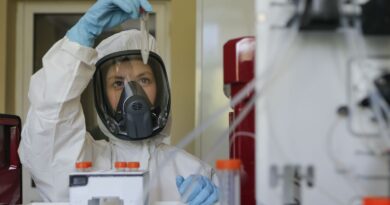44% rural Indians willing to pay for Covid vaccine; 51% consider coronavirus ‘Chinese conspiracy’: Survey

New Delhi: Nearly 44 per cent of rural Indians are willing to pay for the COVID-19 vaccine, while more than half of the population in India’s villages believe the coronavirus crisis is a “conspiracy by China‘, a survey showed on Tuesday.
The survey, conducted by Gaon Connection among 6,040 rural respondents across 60 districts in 16 states and one union territory, found that 36 per cent said they would not want to pay for it. The remaining 20 per cent said they are yet to decide on paying for the vaccine.
Of those who were willing to pay, two-third said they can pay up to Rs 500 for two doses of the vaccine, whenever it is available.
Meanwhile, at least 51 per cent of rural respondents called the coronavirus crisis a ‘conspiracy by China’ and about 18 per cent saw it as the government’s failure. Nearly 20 per cent said they consider it an ‘act of God’, 22 per cent blamed the negligence of the people for the pandemic and 18 per cent did not share any view.
The face-to-face survey was conducted by the rural media platform’s surveyors between December 1 and December 10. It said The selection of states, covering all regions of the country, was based on the prevalence of COVID-19 as per the data of the Union ministry of Health and Family Welfare.
Gaon Connection said the survey has a margin of error of 5 per cent and a 95 per cent confidence level.
The states covered under the north zone included Uttar Pradesh, Bihar, Jharkhand, Himachal Pradesh, Punjab, Jammu and Kashmir, Haryana.
States in the south zone included Kerala, Andhra Pradesh, Karnataka. The west zone included Maharashtra, Gujarat, Madhya Pradesh; whereas the east-northeast zone included Odisha, Assam, West Bengal, Arunachal Pradesh.
Around one-fourth of all respondents said that samples from at least one member of their household was taken for testing of COVID-19.
The proportion of such households was the highest in the east-and-northeast zone, whereas it was the lowest in the north zone.
Of the 25.9 per cent respondent households who reported at least one family member getting tested for COVID-19, more than half (59 per cent), said at least one person in their household had tested positive.
Overall, 15 per cent of the total 6,040 respondent households reported at least one person in their household/friend circle testing positive for COVID-19.
When asked if they had to pay for the COVID-19 vaccine, who in their household/family would they vaccinate first, the three most selected options were: old parents (33.3 per cent), children (26.5 per cent) and the main earner of the family (16 per cent). The majority of the rural respondent households suggested prioritising doctors and nurses for administering the COVID-19 vaccine, followed by by frontline health workers such as ASHAs and ANMs (Auxiliary Nursing and Midwifery), sanitation workers, and police personnel.
The survey also found that COVID-19 has also changed the food habits of rural citizens with almost 70 per cent of respondents (of the 54 per cent total respondents who said they consumed non-veg food items) saying they had stopped eating outside food.
Over 33 per cent said they had started eating more vegetables, whereas 30 per cent said they were eating more fruits. However, every fourth BPL respondent household said its family members were not getting enough food to eat, it said.
At least three vaccine candidates are being examined by the Indian authorities for emergency use authorisation, while a few more are currently in different stages of development and trials.
The number of daily new coronavirus infections reported in the country was recorded below 20,000 after nearly six months on Tuesday while the COVID-19 active caseload has fallen below 3 lakh.
India’s overall COVID-19 caseload stands at over 1 crore, while 1.46 lakh have died so far. More than 96 lakh have recuperated from the disease, pushing the national recovery rate to 95.65 per cent, while the COVID-19 case fatality rate now stands at 1.45 per cent.
*** This article has been archived for your research. The original version from Economic Times can be found here ***


